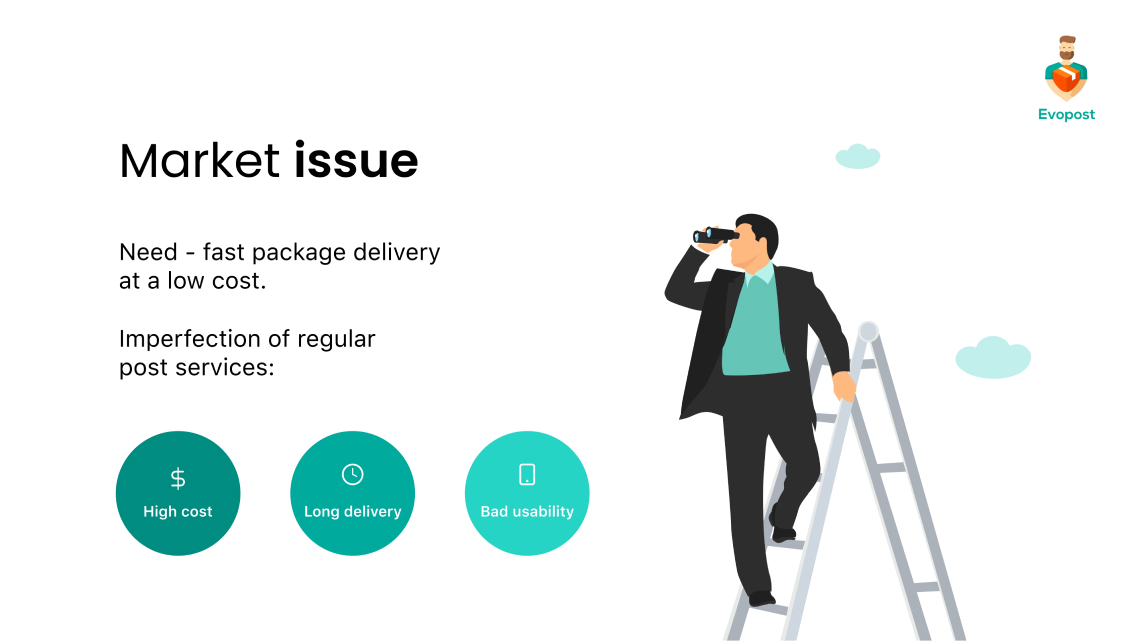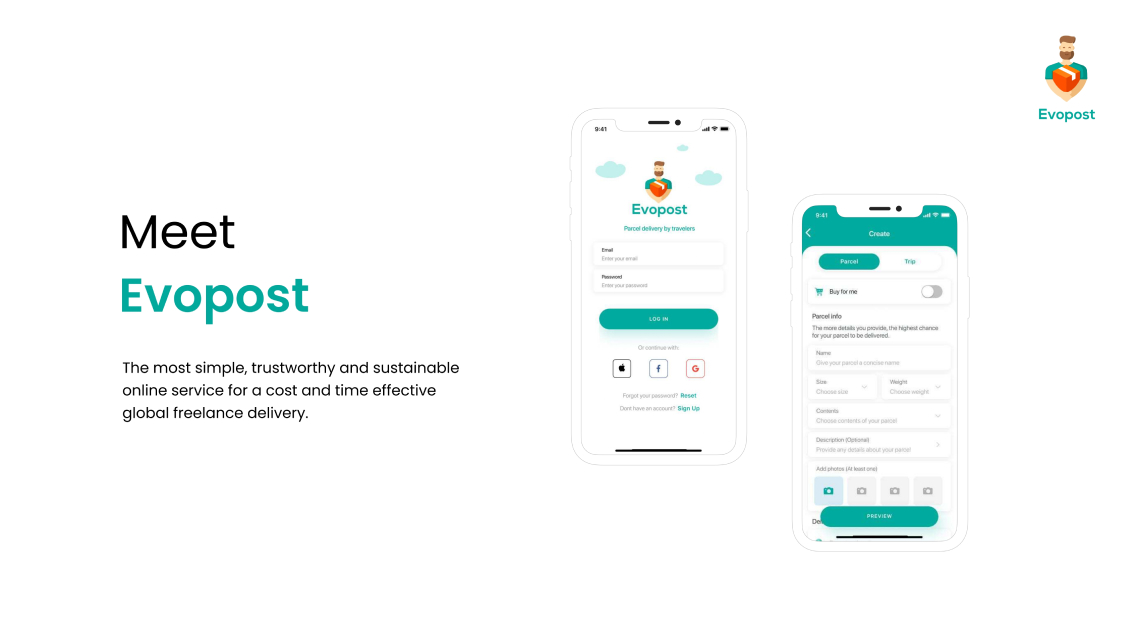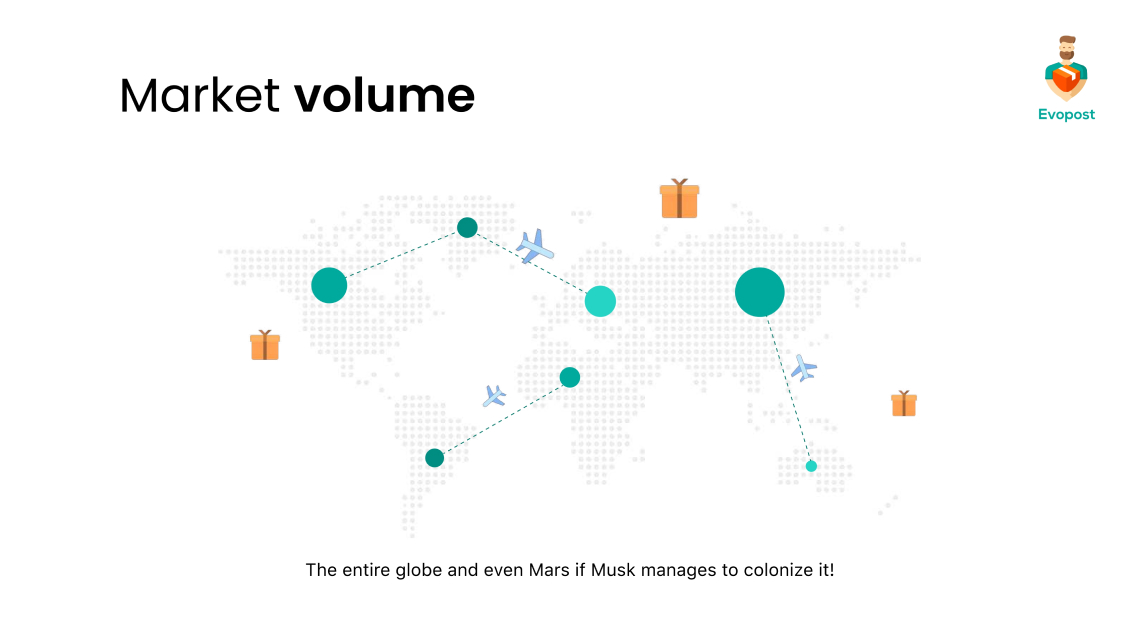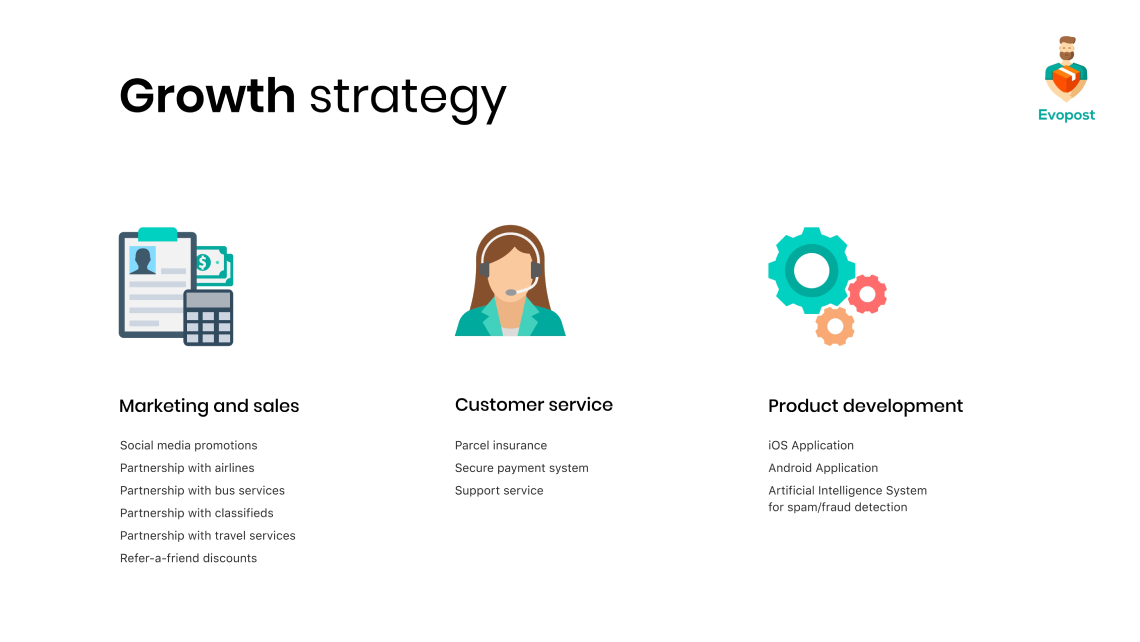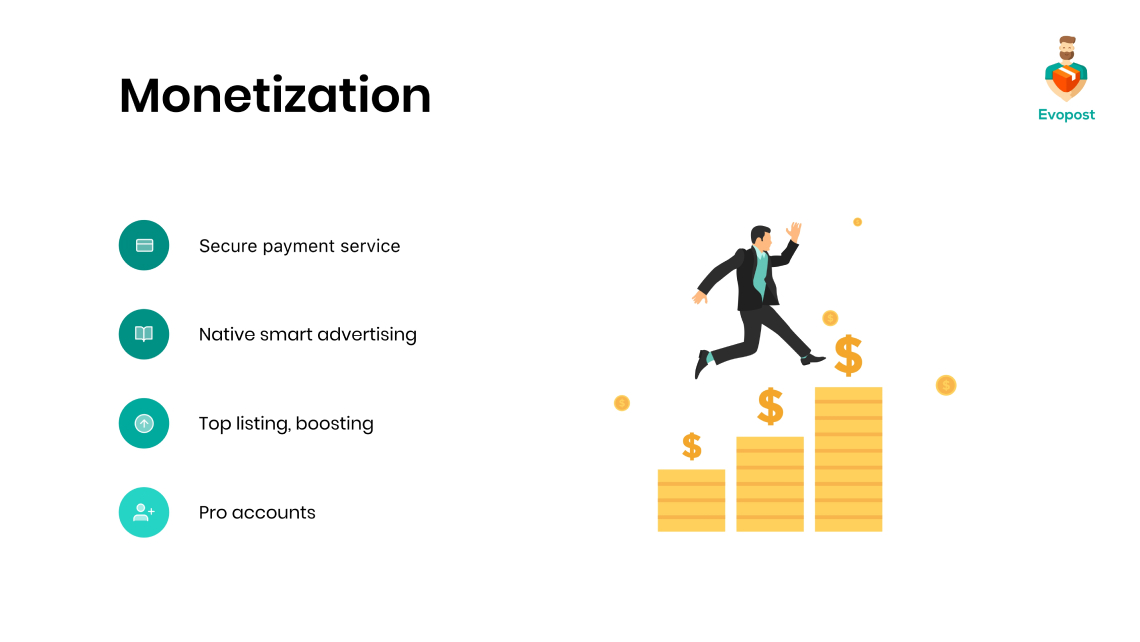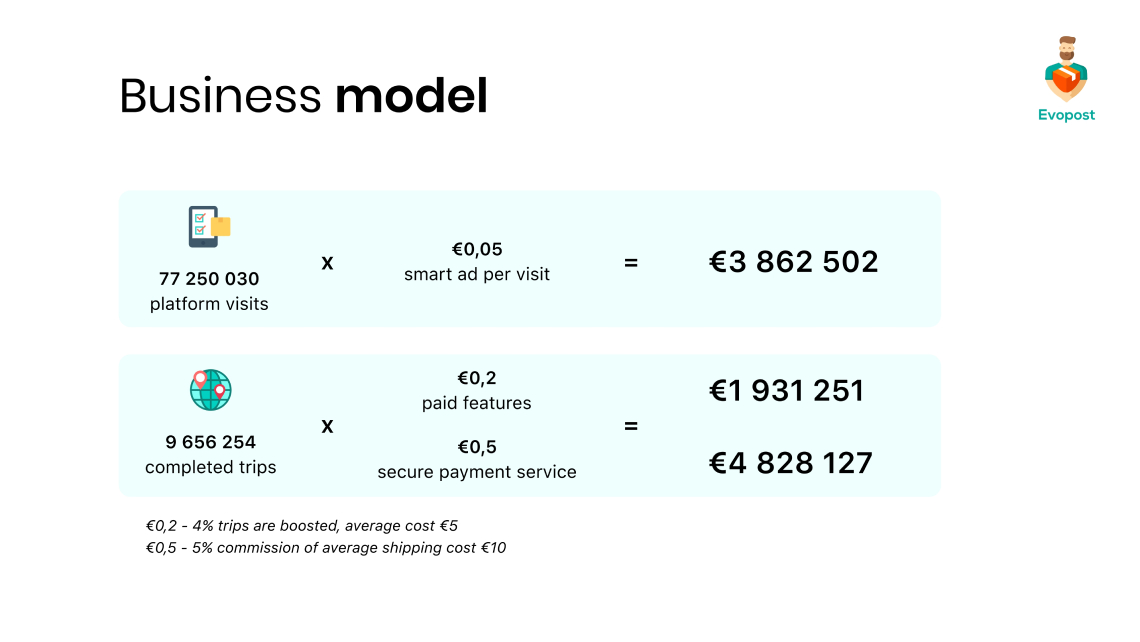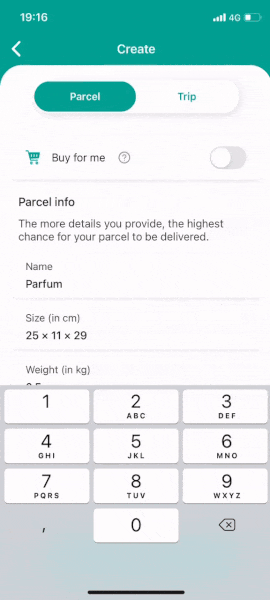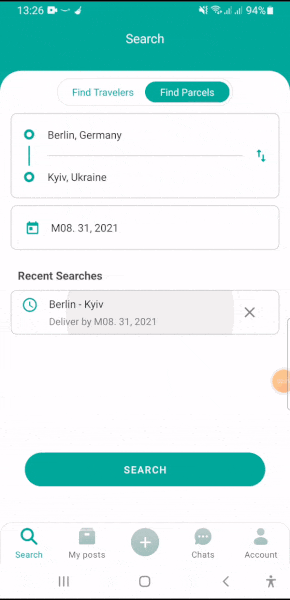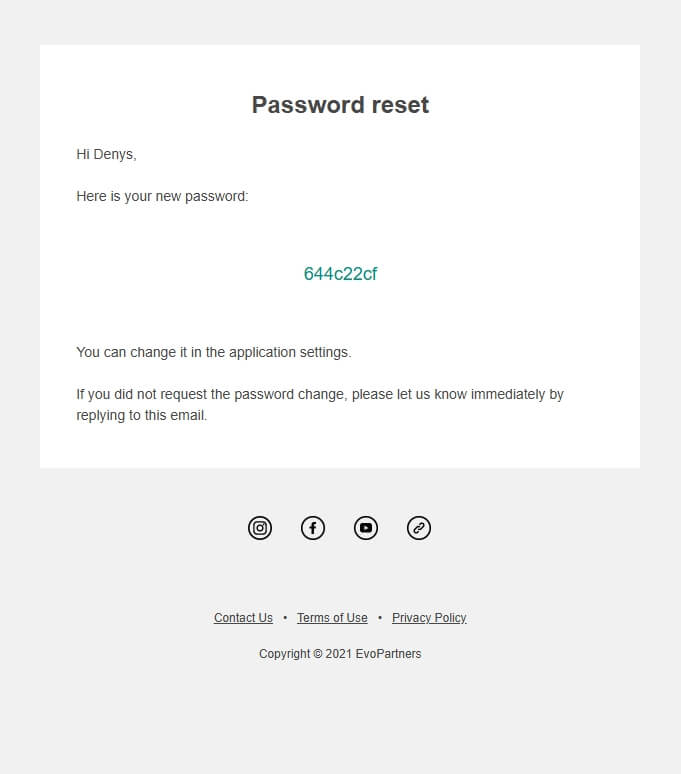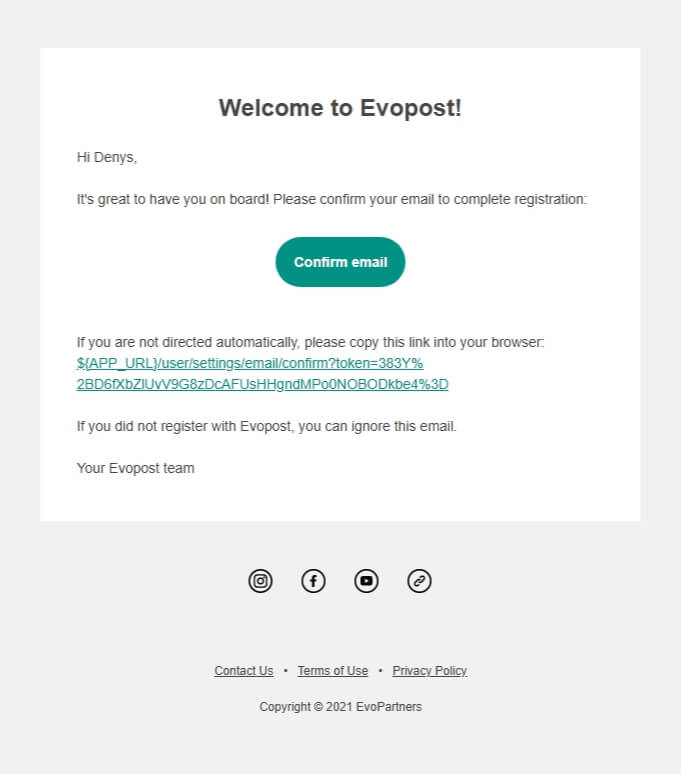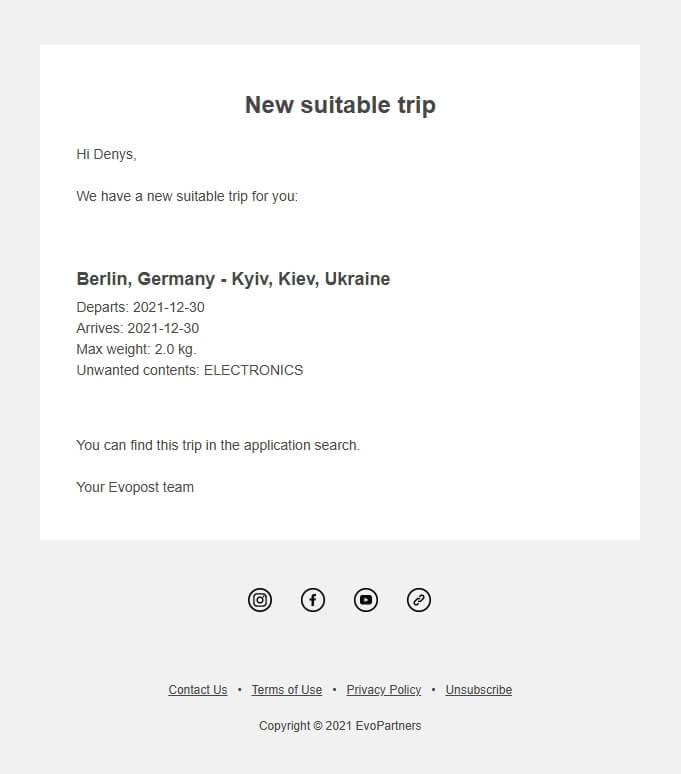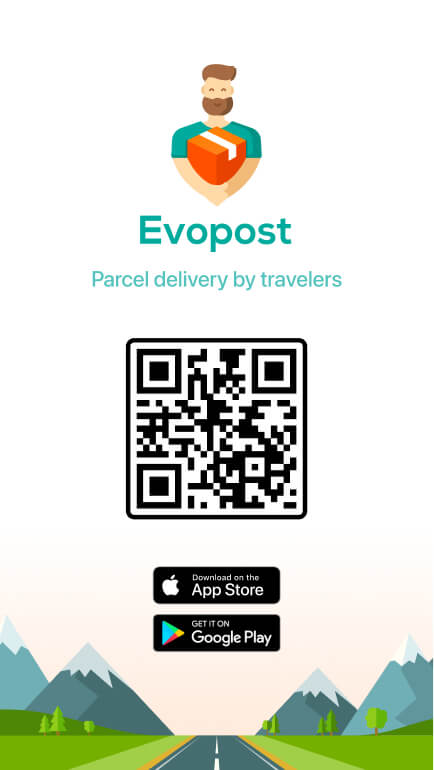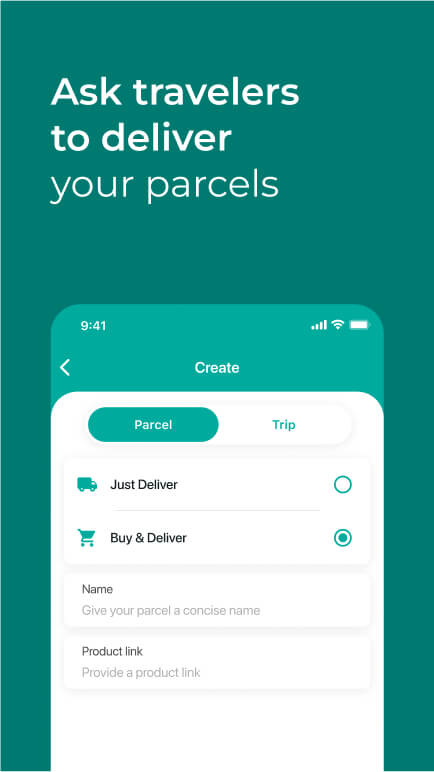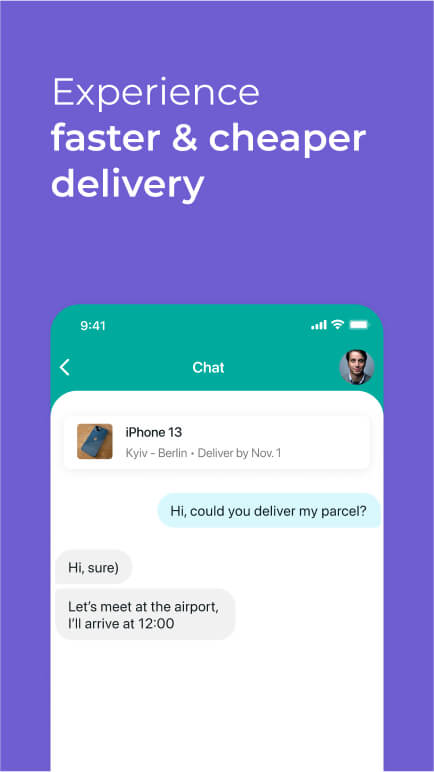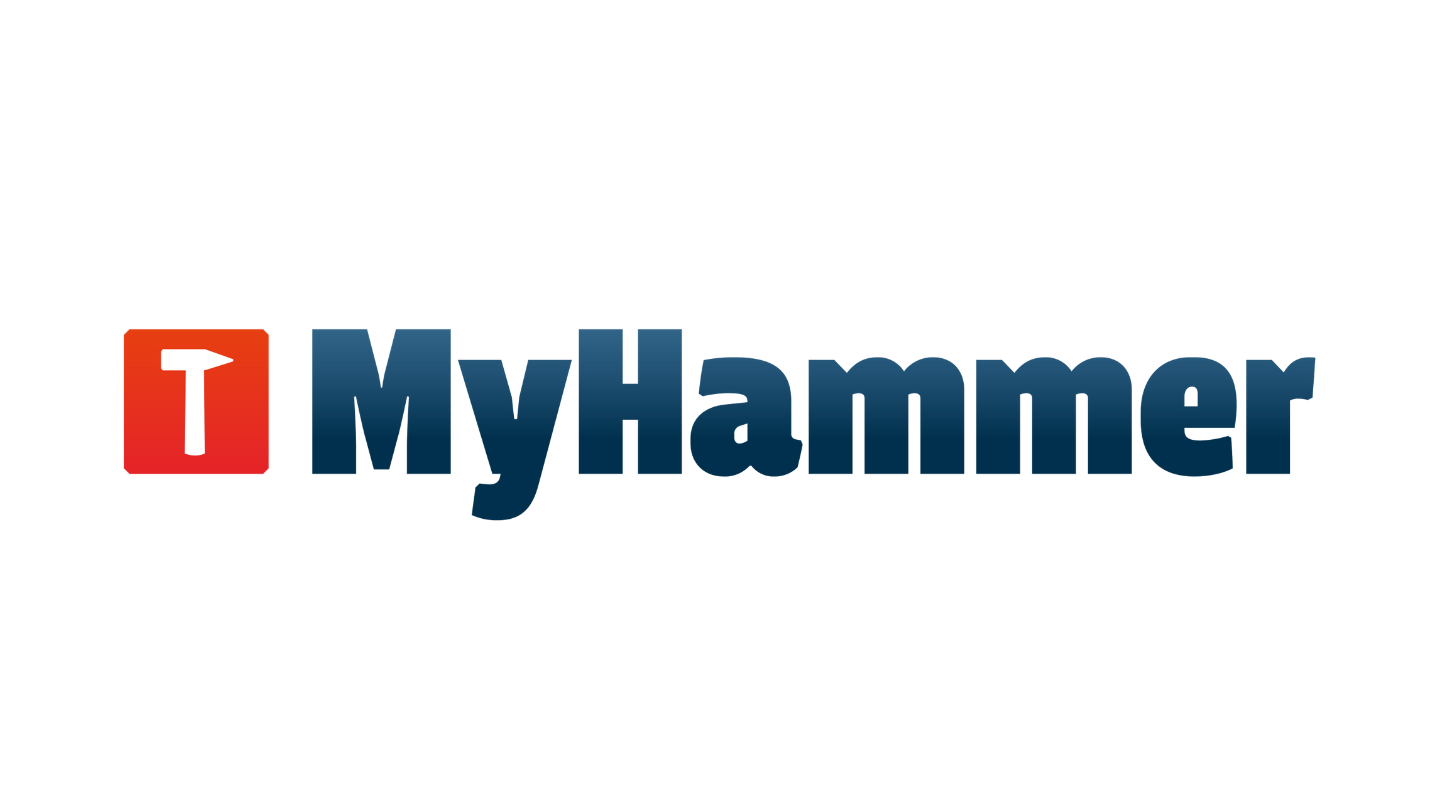
Evopost
P2P marketplace for parcel delivery by travelers.
Team
- Android developer
- iOS developer
- Backend developer
- UI designer
- UX designer (me)
My Role
- Research
- Prototyping
- Usability Testing
- UI Design
- Marketing
Tools
- Figma
- Balsamiq
- Miro
- SurveyMonkey
- Mailchimp
Timeframe
6 months
Challenge
Problem
Many immigrants in Europe have no options for fast and cheap package delivery from their home countries.
Goals
Create a marketplace that connects people who need fast & cheap delivery from abroad with travelers who can deliver packages on the way.
Constraints
- No development budget
- No existing customers
- No knowledge of how to create marketplaces
Design Process
- Research
- Ideation
- Wireframing
- Prototyping
- Usability Testing
- Quality Assurance
- Implementation
- Marketing
Research
Competitor Analysis
The P2P delivery market was highly diverse. Key advantages across competitors included leveraging travelers’ existing routes for affordable international deliveries. Many platforms faced limitations in scale, app availability, or geographic reach.
User Research
To get insights into the most critical part of the audience, the travelers, I created a survey in SurveyMonkey and sent it out to travel-related groups on Facebook, Telegram groups, Instagram, Reddit forums, student communities, etc. It showed that travelers have free space when traveling by car, bus, or train, not by plane. They also would not go somewhere to pick up or return a parcel.
Ideation
Miro Board
I conducted an ideation session in Miro with the product team to address several security issues and simplify parcel transfer for travelers.
Wireframing
User Flow
To visualize the complex user experience of the app for both target groups and align it with the product team, I created and shared a user flow chart in Miro.
Interactive Wireframe
I visualized all required interactions and use cases using Balsamiq without focusing on visual details. In the process, I caught several design issues and found some feature opportunities.
Prototyping
Customer Journey
After wireframing all the relevant use cases, I extended the user flow in a FigJam board and discussed it with the team.
Interactive Prototype
When the wireframe layouts were defined, I created detailed high-fidelity prototypes in Figma for both iOS and Android apps.
Website Prototype
UI Design
App Screens
Components
Icons & Illustartions
Colors & Fonts
Usability Testing
Interviews
Before the implementation, I conducted a usability test of the apps using interactive prototypes. The summary is in the report.
Data Analysis
The test revealed several usability and business problems in each app section. I noted them and clustered on an affinity wall in Miro.
Quality Assurance
To streamline the QA process, I created a spreadsheet with priority, location, description, and a link to screenshots of the found bugs.
Outcome
The marketplace was launched on Google Play and the App Store, but our team could not raise money for the necessary marketing without enough users. Soon after the launch, Russia started a full-scale invasion of Ukraine, and part of our team located in Ukraine was unable to continue working on the project. The Evopost remains frozen to this day.
Learnings
- Being 19-years-old startupers, our team made many typical mistakes. Here are the most crucial of them:
- Creating a full-fledged application instead of MVP.
- Delaying the development due to work in parallel with a full-time job.
- Underestimating the marketing value for our P2P marketplace.

